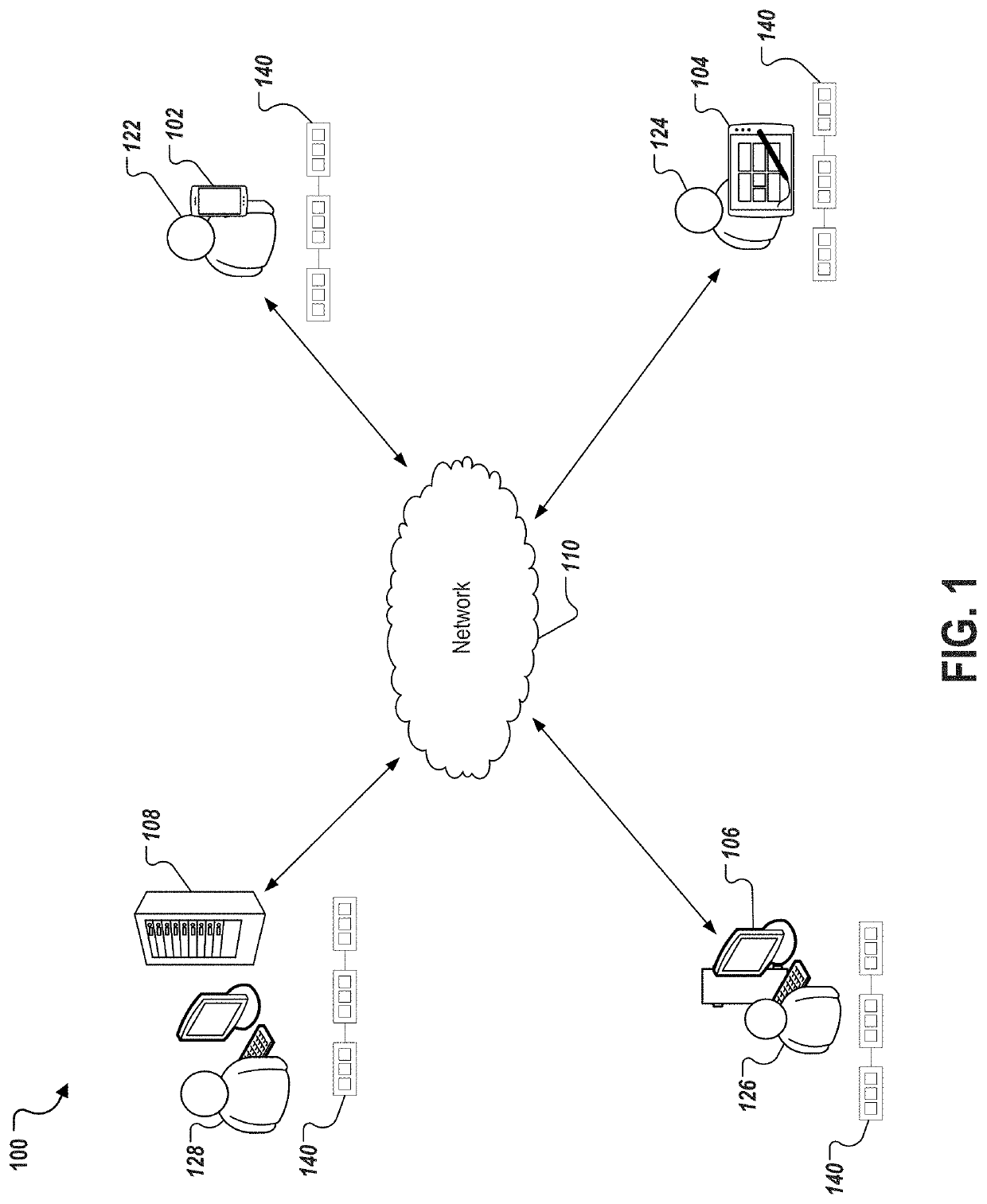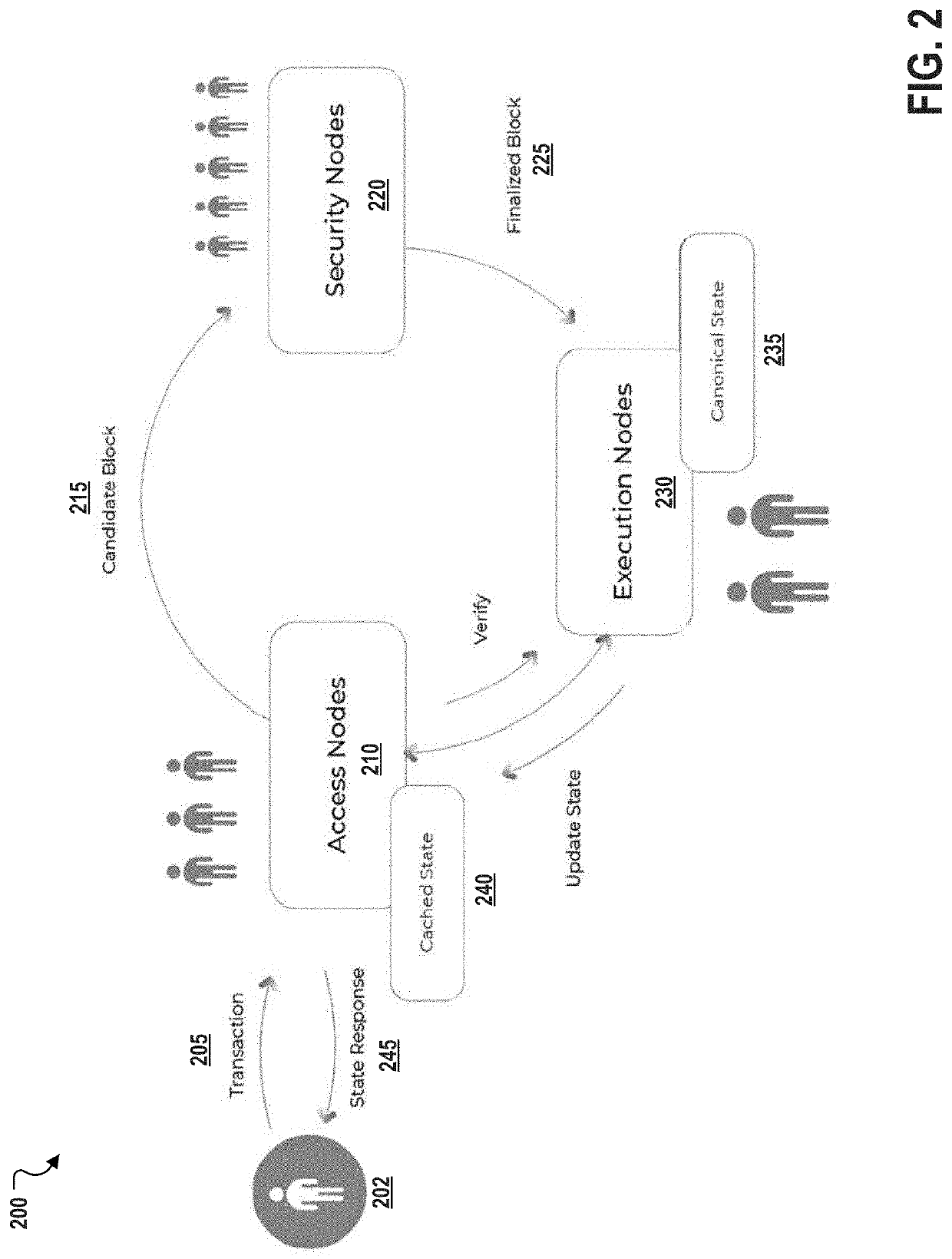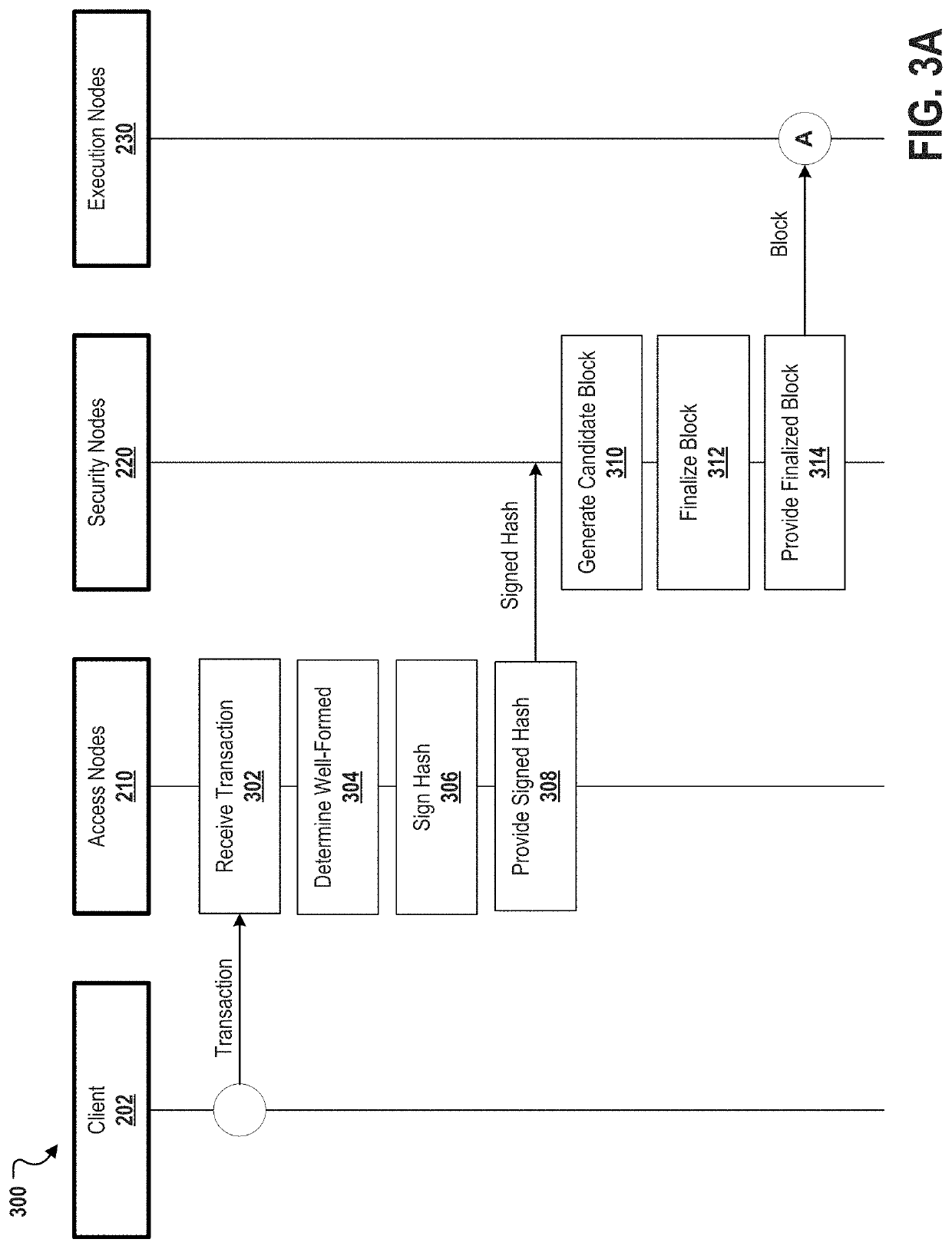Decentralized computation system architecture based on node specialization
a computation system and node specialization technology, applied in the field of decentralized computation system architecture based on node specialization, can solve the problems of complex system design from scratch never working, more complex system can grow out, and cannot be patched up to make it work, etc., to achieve the effect of enhancing the security and decentralization possibilities of the deployed system, enhancing the throughput of the network, and high throughpu
- Summary
- Abstract
- Description
- Claims
- Application Information
AI Technical Summary
Benefits of technology
Problems solved by technology
Method used
Image
Examples
Embodiment Construction
[0019]Described herein, in certain embodiments, are decentralized computation systems for a for providing secure and scalable decentralized computation for one or more decentralized applications comprises: a blockchain; and a plurality of nodes comprising a plurality of each of three specialized node types, the specialized node types comprising access nodes, security nodes, and execution nodes; the access nodes configured to perform at least: receiving one or more transactions from at least one client, the one or more transactions each comprising transaction text and credentials; cryptographically signing a hash for each of the transaction text of the one or more transactions based on a determination that the one or more transactions are well-formed; providing the one or more signed hashes to the security node for validation; and providing a state response to the at least one client, the state response determined based on an output for a block; the security nodes configured to perfo...
PUM
 Login to View More
Login to View More Abstract
Description
Claims
Application Information
 Login to View More
Login to View More - R&D
- Intellectual Property
- Life Sciences
- Materials
- Tech Scout
- Unparalleled Data Quality
- Higher Quality Content
- 60% Fewer Hallucinations
Browse by: Latest US Patents, China's latest patents, Technical Efficacy Thesaurus, Application Domain, Technology Topic, Popular Technical Reports.
© 2025 PatSnap. All rights reserved.Legal|Privacy policy|Modern Slavery Act Transparency Statement|Sitemap|About US| Contact US: help@patsnap.com



